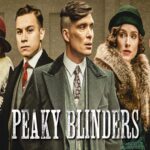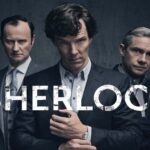The Crown: A Regal Drama
Since its debut, Netflix’s The Crown has captivated audiences with its lavish production, intricate storytelling, and a glimpse into the gilded cage of the British monarchy. This historical drama, which follows the reign of Queen Elizabeth II from her ascension to the throne to the modern era, has ignited conversations, sparked controversies, and cemented its place as a cultural phenomenon. Let’s delve into the world of royalty, power, and personal drama that has made The Crown a must-watch for millions.
Concept and Premise: A Royal Reign
Primarily, The Crown is a historical drama detailing the life and reign of Queen Elizabeth II. The series retains a fictionalized but highly researched point of view of the British monarchy, undertaking an exploration into the intrigues of the royal life behind the palace walls. From Buckingham Palace to the personal struggles of a woman who never wanted the role, the drama charts power, duty, and the human cost of leading.
The Crown offers a singular view of the defining moments of the 20th century, through the historical position held by the royal family. It tiptoes along that thin line separating fact from creative interpretation, hence making it at once educative and engaging.
Key Characters: The Royal Family and Beyond
With the Crown, comes a host of characters that bring this regal drama to life. At the core, obviously, is Queen Elizabeth II, played by Claire Foy, Olivia Colman, and Imelda Staunton, each going all out to bring her character to the screen in great depth and complexity in each of the show’s seasons. Her devotion to duty offsets the personal troubles, hence enhancing the picture of a monarch overwhelmed with the crown.
There’s also Prince Philip, the Duke of Edinburgh, played by Matt Smith, Tobias Menzies, and Jonathan Pryce, who plays the pivotal character. The central axis of the series is his dynamic relationship with the Queen, as he navigates his role of consort while yearning for independence.
Vanessa Kirby and Helena Bonham Carter bring to life Princess Margaret, the sister of the Queen, full of life and a real rebel. Her troubles and those regarding her professional life draw a striking contrast to the life her sister leads, without royal duty.
Beyond the immediate royal family, characters also extend to rich ensembles of figures in politics, courtiers, and noble families. Much like a rich tapestry, these people add to the series with their offerings: one on the monarchy, another that fits within the larger framework of the history of the time.
A Royal Setting: The World of Crown
It sweeps one into the lush, sometimes stark world of the British monarchy. From the royal scenery of Buckingham Palace down to the intimate setting of Balmoral Castle, this series has been replicating iconic royal residences and whisks audiences into the exact same lavish lifestyle of the royal family.
While the show uses many real locations, like Lancaster House, which doubles as Buckingham Palace, other equally stunning properties give the series its royal flavour. Locations that range from historic castles to stately manors help present the atmosphere of royalty most credibly and in an arresting way. It creates a sense of being walked into another age when the royal interiors and exteriors are meticulously recreated.
How Long Did It Run? A Royal Endeavor
The Crown is an epic TV series running through several decades of Queen Elizabeth II’s reign. The royal saga was planned across six seasons—the show itself gives a grand treatment to substantial periods of the monarch’s life. This rare casting strategy, in which different actors play the same characters at different ages in order to remain faithful to history and character development, has been adopted for the series. It is in this kind of ambitious undertaking that The Crown has had the chance to burrow deep into the intricacies of the royal family and the nation with time.
From critical acclaim and viewer count to the ensuing awards, it was sure to cement itself in television history. One need not look any further than the impact the show is having on popular culture. Quite to the end, as the series comes to a close, it reminds one of the times the audience is left with, a reflection of the enduring legacy of the House of Windsor.
Conclusion: A Royal Legacy
The Crown has captured the imagination of the people due to its richly realized amalgam of historical drama and royal intrigue. In delving into the complexities of the British monarchy, this series has opened a thousand conversations around duty, power, and that indefatigable piece of headgear: the crown.
It’s an institution that has etched history in vivid hues and riveting detail, from the full pomp of Buckingham Palace to the intimate struggles of its inhabitants—what The Crown has done so far. Where the series concludes, it leaves behind an assured legacy as a groundbreaker for television drama and thereby makes its mark on audiences worldwide.
Royal Windsor Tour
Not necessarily related to the TV series.
Royal Windsor Afternoon Tour from London
Royal Windsor tours from London: Windsor Castle, the famous residence of the British Royal Family for centuries. Afternoon Tour to Windsor Castle, Windsor Town, and St. George’s Chapel—the last-named hosting Prince Harry and Meghan Markle’s wedding. This afternoon tour provides an opportunity to visit the Royal Family’s home.




